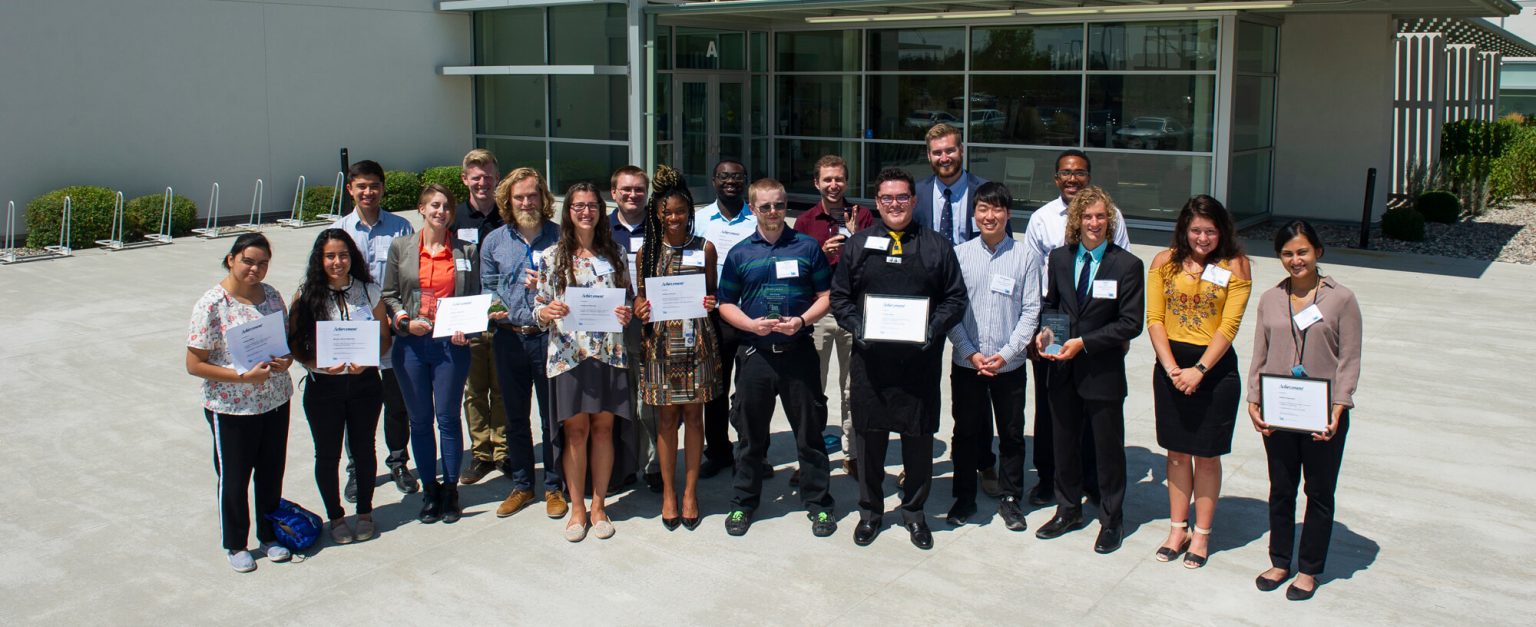Summer is the time Idaho National Laboratory comes alive with youthful energy, courtesy of hundreds of interns from high school to the Ph.D. level.
From all over the world, they begin arriving in May, meeting their mentors and getting to know each other. On and off the job, friendships are forged, adventures embarked upon. And thanks to a program that has expanded in scope dramatically over the past five years, the lab’s University Partnerships department offers dozens of opportunities for professional development and community service.
Then suddenly it’s early August, and time for the annual Intern Expo.
Imagine the last day of camp merged with a university research symposium, with posters on everything from the porosity of low-enriched uranium (Nuclear Science & Technology) to augmented reality (Energy and Environment Science & Technology) to integrated circuit vulnerabilities (National & Homeland Security).
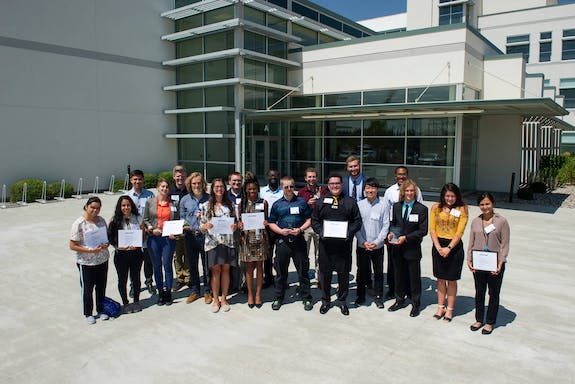
This year’s expo was held Aug. 9 at the INL Meeting Center on University Boulevard. More than 100 posters were displayed at the session, grouped into four categories: World’s Nuclear Energy Future, Enabling Clean Energy Development, Securing and Modernizing Critical Infrastructure and Enabling INL Business and Support Operations.
So far this year, the lab has hosted 360 interns from 97 institutions. It is the most diverse class of interns ever, with participants from 37 international institutions in 18 foreign countries. While their fields of study vary widely, the majority are involved in STEM (science, technology, engineering and math) disciplines.
“I got to dive into policy,” said Denise Owusu, who is pursuing an advanced degree in energy engineering and technology innovation management at Carnegie Mellon University. At INL, Owusu studied regulatory and licensing strategy for microreactors under the guidance of Dr. Shannon Bragg-Sitton, her mentor for the summer.
After earning a bachelor’s in petroleum engineering at Louisiana State University, Owusu, from Houston, decided she wanted to be “on the right side of history” and shifted her attention to sustainable energy, particularly nuclear. Her focus as an intern has been on ways to reduce traditionally long regulatory review times.
At INL, she learned far more than she could in a classroom. “I got to see what it’s like to be a manager in this field,” she said.
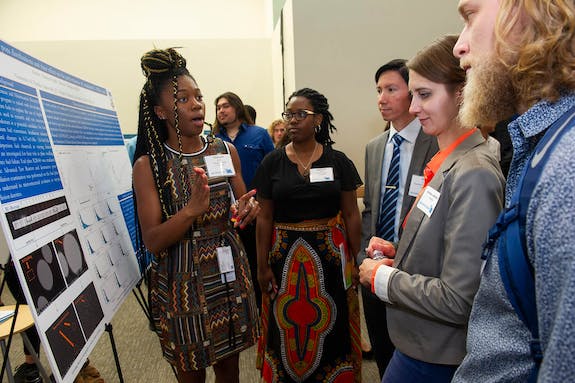
A broad array of experience and views was a big consideration in recruiting an eight-intern team for the Process Architecture organization, mentored by Curt Flemming, Susan Hipp, Johanna Oxstrand, Linda Reeder and Natalie Schmidt.
“When you bring different perspectives to the table, you get better results,” said Flemming, an executive from Battelle Memorial Institute currently engaged in a management system transformation project at INL. The team, which won in the Enabling INL Business and Support Operations category, was composed of students with various backgrounds ranging from the undergraduate to master’s degree level. “We intentionally sought out students with diverse skills and backgrounds,” Flemming said.
In vetting the candidates, each student was how to make a peanut butter and jelly sandwich (PB&J). “We wanted to understand from the interns how they thought through a process,” said Flemming. The responses were more revealing than they expected.
One candidate said, “I’d make a shopping list and go to the store.” Some – like Nikita Khairatkar, from India – had never made or eaten PB&J, so the interview team asked her to describe how to make a comfort food from her home country. Overall, the students who ended up on the team were those who asked questions, carefully thought through their responses, and understood the variations that could occur.
INL internships are in high demand, and the competition for them is tough. In addition to providing expert guidance from professionals and hands-on experience, they pay a nationally competitive wage. Beyond actual subject matter, interns also learn “soft skills” such as project management, computer literacy and verbal and written communications. The lab offered more than 50 enrichment activities in 2018, including LinkedIn best practices, resume writing and interviewing skills, and even wilderness safety.
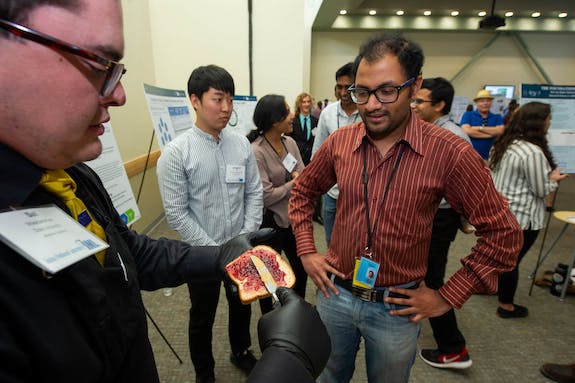
In the Energy and Environment Science & Technology directorate, Marko Sterbentz, an Idaho Falls native now studying at University of California, and Rajiv Khadka, from University of Wyoming, were back with Dr. James Money in the Applied Visualization Laboratory at the Center for Advanced Energy Studies. Both have been involved in developing programs for immersive visualizations from terrabyte- and exabyte-sized data sets.
It requires innovation to process such massive amounts of information smoothly. Sterbentz’s focus has been on devising ways to get high-fidelity data representation while using smaller but still representative portions of the data. Khadka, meanwhile, continued working on a collaborative virtual environment not bound to any one kind of hardware system. When one collaborator can view data in the CAVE while another is viewing it on a laptop, tablet, headset or phone, the next step is devising programs that make the data accessible across wide geographical areas.
Dewen Yushu, pursuing a doctorate at University of Notre Dame, spent his summer under the guidance of Dr. Eric Dufek, studying the mechanical and electrochemical characteristics of lithium-ion batteries. He said the resources available at INL’s Energy Systems Laboratory gave him much greater insight to take back to his research at Notre Dame.
Research that can go directly toward a Ph.D. publication is one of the main draws of an INL internship, said Dr. Andrea Jokisaari, mentor to two doctoral students this summer, Pierre-Clement Simon and Aashique Rezwan. Both came recommended to her by the same adviser, Dr. Michael Tonks of the University of Florida, and both worked on computational materials science using MARMOT, a code that predicts how microstructures of nuclear materials evolve in-reactor.
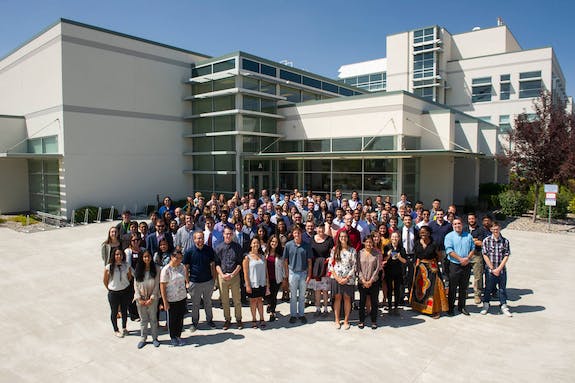
“This gives you a real-world experience,” Jokisaari said. “I would be happy for them to come here again. Both of them would be excellent additions to the laboratory.”
Interns working on National & Homeland Security research found themselves quickly integrated into a team working on understanding component vulnerabilities in the cyber-supply chain. If a certain device is reported to have an integrated circuit that is compromised, the big question is whether other devices with the same circuit, while unreported and from a different manufacturer, might be compromised as well.
“They put a lot of information into our database that will go into the final report,” said Virginia Wright, who directed the interns. Two on the team – Malik Hayes and Stephanie Jones – came from the GEM Fellowship program, a diversity initiative embraced by INL this year.
“I enjoyed my experience,” said Hayes, who is pursuing a master’s at Georgia Tech but already planning to return to INL next summer. “I’m an IT guy, but what I was doing this summer was more operational security. It really opened my eyes and gave me a lot of insight into how the hardware can be vulnerable as well as the software.”
“We won the intern lottery,” Wright said. “They acted like full-fledged cyber researchers. They joined our team and we were able to fly farther and faster because of them.”
The following interns and teams were named winners at the INL 2018 Intern Expo Awards Ceremony on Aug. 9:
Category: World Nuclear Energy Future
Winner: Logan Harbour, Texas A&M, Master of Science, nuclear engineering
Mentor: Mark DeHart, Reactor Physics Design and Analysis Organization
Poster submission: Uncollided Flux Treatment for Discrete-Ordinate Radiation Transport Solutions in Rattlesnake
1st runner-up: Kristen Baker, Colorado School of Mines, Bachelor of Science, mechanical engineering
Mentor: Phil Erickson, Plant & Project Engineering Organization
Poster submission: Port Cover Adapter
Category: Enabling Clean Energy Development
Winner: Ethan Woodbury, University of California Berkeley, Bachelor of Science, chemical engineering
Mentor: Ruby Nguyen, Systems Analyses and Engineering Organization
Poster submission: Electric Vehicle Battery Chemistries and Implications for Material Demand
1st runner-up: Monica Oliva-Sifuentes, Firth High School
Mentor: Neal Yancey, Bioenergy Technologies Organization
Poster submission: Particle Size Distribution
Category: Securing and Modernizing Critical Infrastructure
Winner: Jacob Lehmer, Idaho State University, Bachelor of Science, nuclear engineering
Mentor: Jake Gentle, Infrastructure Security Organization
Poster submission: Machine Vision Techniques for Designing Least Cost Transmission Lines
1st runners-up: Aniqua Baset and Christopher Becker, University of Utah, Ph.D., computer science
Mentor: Kurt Derr, Communications and Modeling Organization
Poster submission: Detecting and Localizing Spectrum Offenders using Crowdsourcing
Category: Enabling INL Business and Support Operations
Winners: Ryan Barna, Montana State University, Bachelor of Science, biological engineering; Tim Blain, University of Georgia, Bachelor of Science, management information systems; Dongyeon “Kade” Ha, Brigham Young University, Bachelor of Science, information systems; Nikita Khairatkar, MBA, Idaho State University; Sal Mascareñas, Duke University, Master of Science, engineering management; Danielle Pearson, Liberty University, Bachelor of Science, human resources; Weston Tice, University of New Mexico, Bachelor of Science, accounting; and Jonathan Trusty, University of Idaho, Bachelor of Science, international business
Mentors: Curt Flemming, Susan Hipp, Johanna Oxstrand, Linda Reeder and Natalie Schmidt, Process Architecture Organization
Poster submissions: What we Found, Changing Our Thinking, and The Final Impact
1st runner-up: Adrienne Petrovic, Idaho State University, Bachelor of Science, secondary education
Mentor: Cathy Riddle, K12 STEM Organization
Poster submission: A Parent’s Guide to STEM
Best Informational Graphic
Winner: Pierre-Clement Simon, Pennsylvania State University, Ph.D., nuclear engineering
Mentor: Andrea Jokisaari, Fuel Modeling and Simulation Organization
Poster submission: Grand Potential Modeling of Zirconium Hydride Microstructure for the Study of Delayed Hydride Cracking.
1st runner-up: Briana Frank, Blackfoot High School
Mentor: Pamela Barnes, Information Storage and Retrieval Organization
Poster submission: Are You Protecting Your Information?
Best Technical Presentation
Winner: Pierre-Clement Simon, Pennsylvania State University, Ph.D., nuclear engineering
Mentor: Andrea Jokisaari, Fuel Modeling and Simulation Organization
Poster submission: Grand Potential Modeling of Zirconium Hydride Microstructure for the Study of Delayed Hydride Cracking
1st runner-up: Kofi Oware-Sarfo, Oregon State University, Ph.D., chemical engineering
Mentor: Yongfeng Zhang, Fuel Modeling and Simulation Organization
Poster submission: Investigation into the initiation of localized corrosion in stainless steel by first principles
Intern Mentor of the Year
Winner: Susan Hipp, Process Architecture Organization
1st runner-up: Andrea Jokisaari, Fuel Modeling and Simulation Organization
Fun awards:
INL Intern Explorer of the Year (given to the intern who explores the most of southeastern Idaho): Charlyne Smith, University of Florida, Master of Science, nuclear engineering. Smith explored not only southeastern Idaho, but much of the western United States.
Achievement for attending the most intern enrichment activities: Jonny Henderson, Idaho State University, Bachelor of Science, German/military science
INL intern who traveled farthest for their internship: Michele Fullarton, Brisbane, Australia. University of Florida, Ph.D., materials science and engineering
Best Bowler: Haydn Bryan, Boise State University, Bachelor of Science, economics. He was the first to arrive at Intern Bowling Night and posted the highest score.

